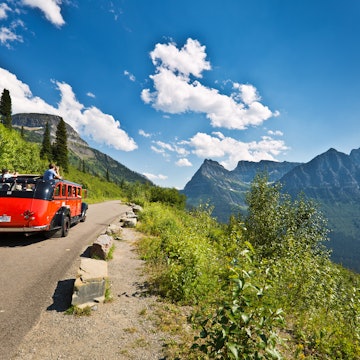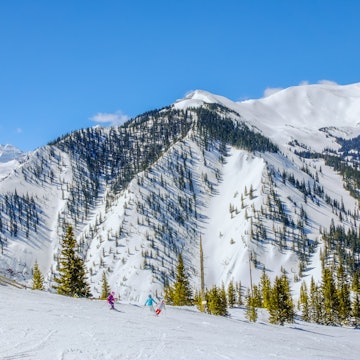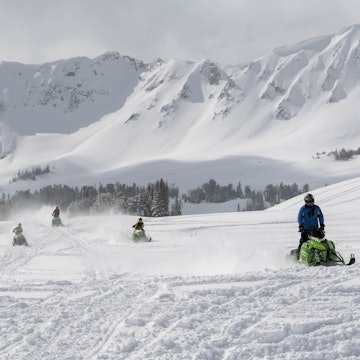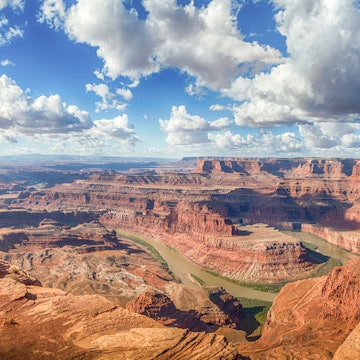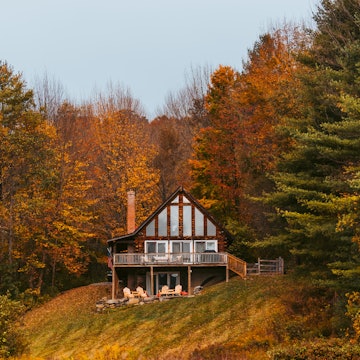
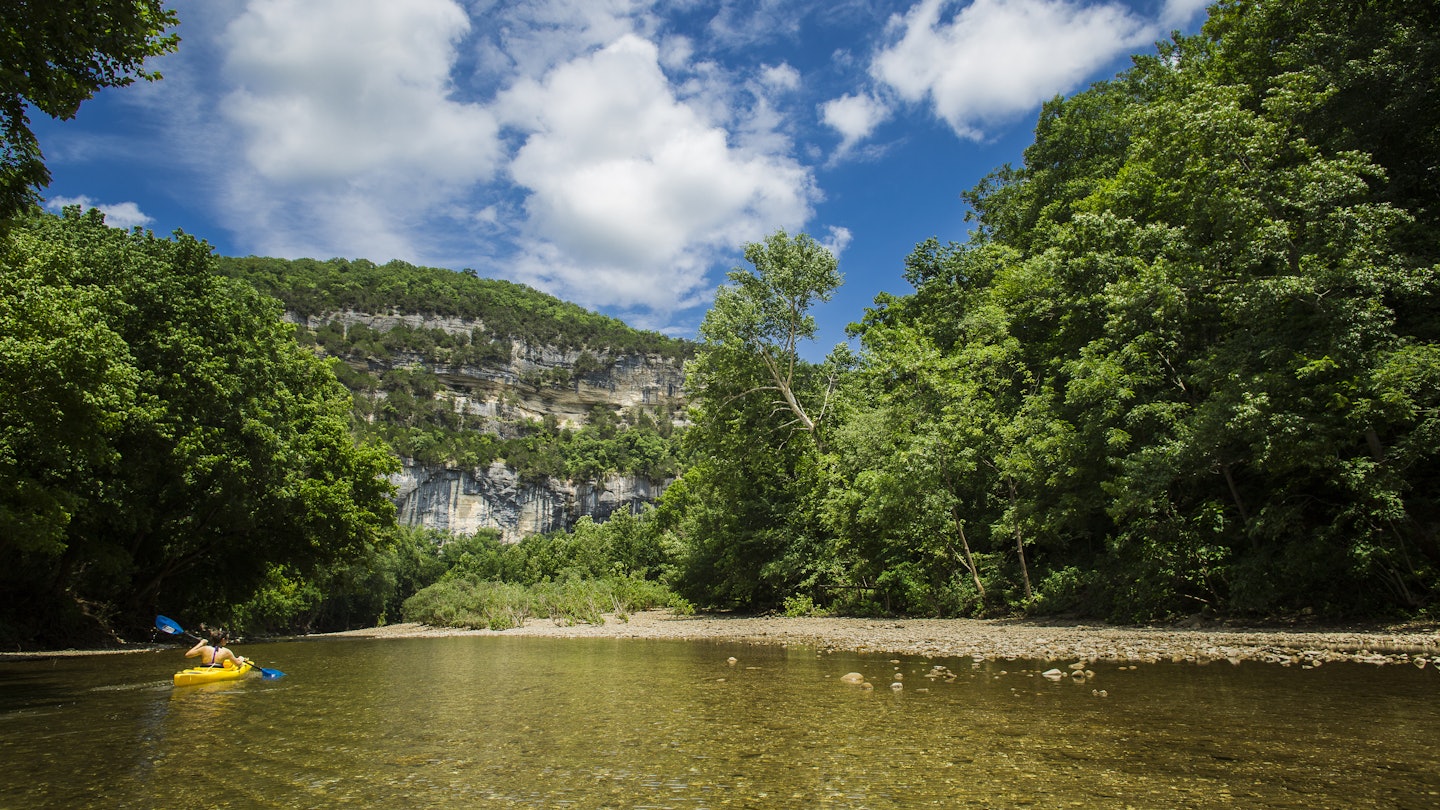
A view from the Buffalo River with a kayaker looking towards Big Bluff and the Goat Trail. Gunnar Rathbun/Shutterstock
Nothing says summer like lazily drifting down a river with just a few days’ worth of gear stashed in dry bags and the sound of gently lapping water. But if you didn’t grow up paddling local streams or if your only frame of reference is splashy, adrenaline-packed whitewater rafting, this world might sound completely foreign.
When my husband and I moved to the Ozarks, we’d never even considered an overnight float (he’s from the Gulf Coast; I spent most of my life in southern Arizona). But a few months later, we launched a rented 17-foot canoe into Arkansas’ Buffalo National River for an epic three-day, 31-mile float. We made a few rookie mistakes and learned a lot, but quickly fell in love with this ancient yet new-to-us way of exploring the outdoors, simultaneously serene and exhilarating. In our first Ozarks summer, we floated another half-dozen times, including two more overnight trips. Each one taught us something new – about gear, weather, campsite strategy, reading a river and how to head home still married.
It’s important to note that while many people use the terms “floating” and “rafting” interchangeably, they’re both wildly different from whitewater trips. “Floating” refers to slower-paced, scenic river travel in canoes, kayaks, inner tubes or inflatable rafts. Here, we’re focusing specifically on DIY overnight trips – leisurely adventures you can plan and paddle on your own, even as newbies.
We're sharing the lessons and tips we learned to give you everything you need to plan your own overnight raft or float trip.
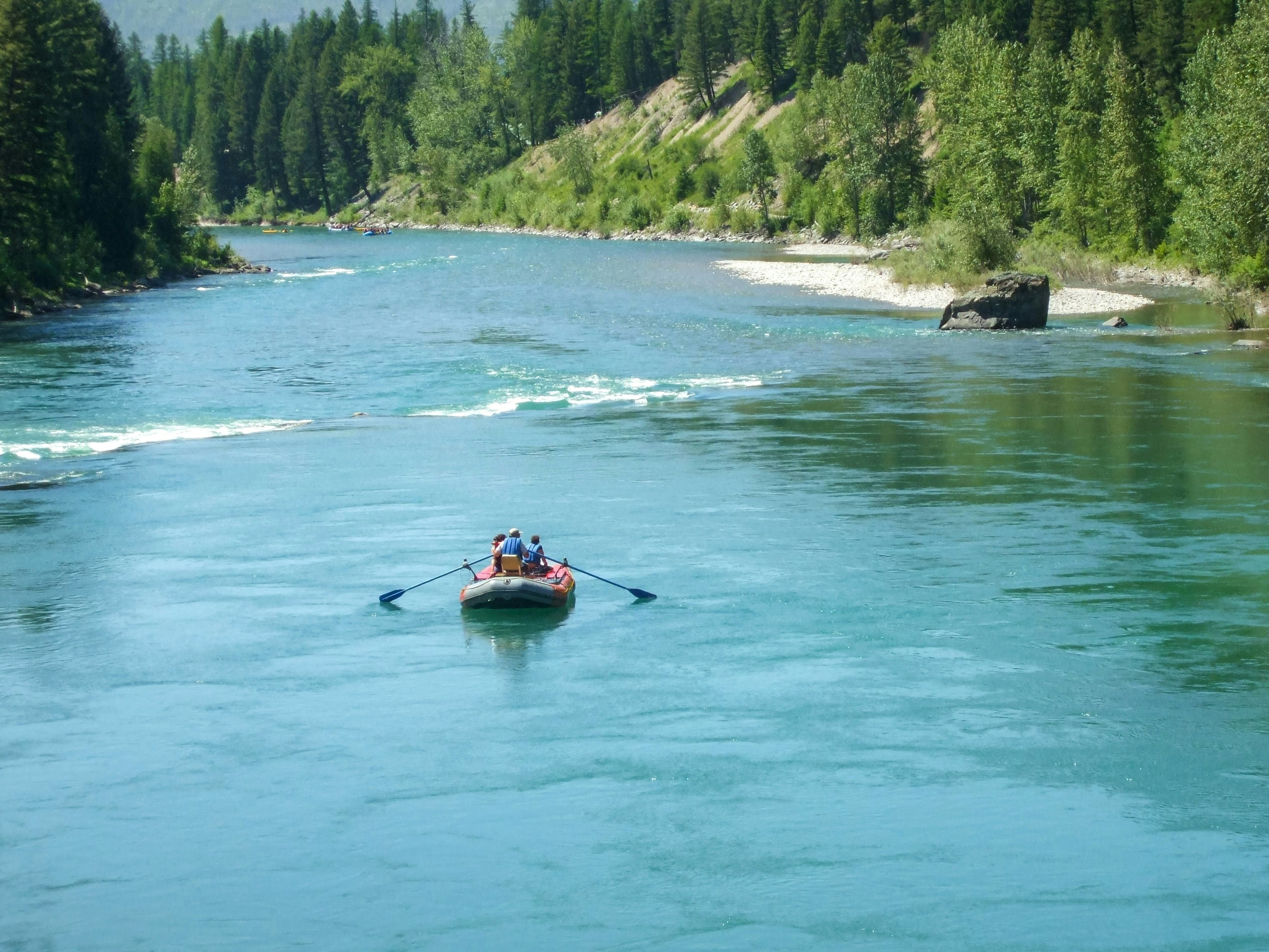
Best rivers for overnight raft trips
Buffalo National River
Fly into Little Rock, Arkansas, or Springfield, Missouri, to float below towering bluffs and pitch a tent on gravel bars along the Buffalo National River. We’ve used Buffalo River Outfitters twice, and you’ll find several other companies in nearby Ponca and Jasper.
Flathead River
Explore the Flathead River, bordering Montana’s spectacular Glacier National Park, in summer. The Middle Fork has exciting class II and III rapids, while the North Fork is calm. This is bear country, so skip the primitive campsites and instead book a guided trip with Glacier Guides.
Current and Jacks Fork Rivers
The spring-fed, crystal-clear Current and Jacks Fork rivers, part of Missouri’s Ozark National Scenic Riverways, offer some of the best leisurely floats – and trout fishing, if that’s your thing – in the country. This area’s remote; road trip or fly into St. Louis, about three hours away.
Delaware Water Gap
The Delaware Water Gap, just 1.5 hours from NYC, separates Pennsylvania and New Jersey. The 20-mile stretch from Dingmans Ferry to Smithfield Beach is the most scenic and beginner-friendly; Edge of the Woods Outfitters offers one- or two-night trips with shuttles.
Upper New River
The New River, spanning both Virginia and West Virginia, is famous for its wild rapids, but the Upper New in particular has long, calm stretches. Book an overnight with Tangent Outfitters in Pembroke (about one hour from Roanoke) in the summer, when the water is calmest.
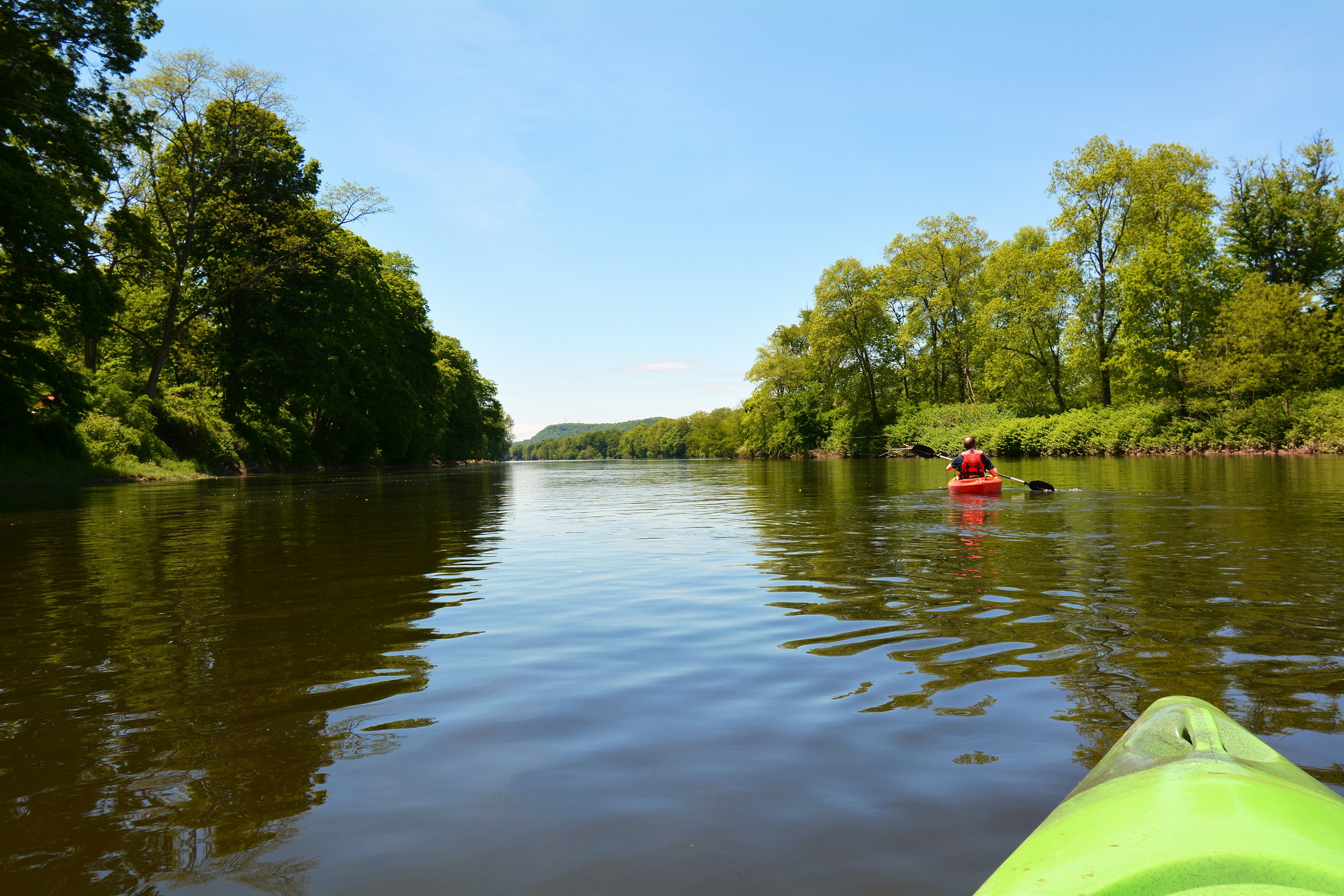
How far in advance should I plan my rafting trip?
Good news: aside from a couple of bucket list-worthy exceptions (the Grand Canyon and Middle Fork of the Salmon River in Idaho), this isn’t like trying to snag a campsite at Yosemite. You can often plan an overnight float trip two to three weeks out, and you may have luck a few days before.
That said, river outfitters in some areas – especially near popular national parks and where the rafting season is short – book further out, particularly on weekends. If you’re unfamiliar with the area, give yourself at least a month or two to research gear rentals, shuttle logistics and camping options. Outfitters generally offer everything, but in case you need to rent boats from one company and book a shuttle somewhere else, don’t wait until the last minute.
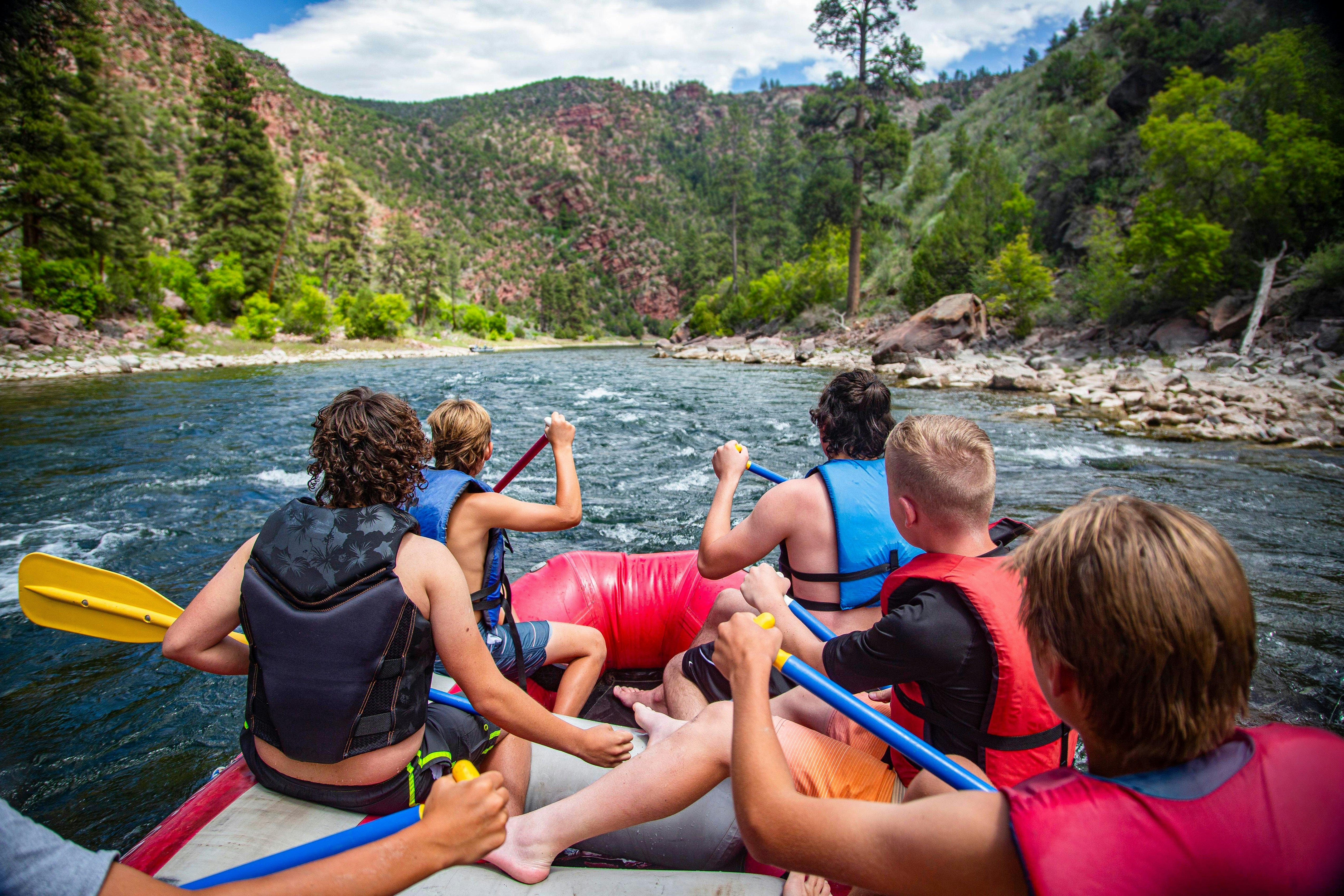
Best time of year to go rafting
This largely depends on where you go. In the Mountain West (think Colorado, Montana, Wyoming), early summer through mid-September is best – once snowmelt slows and river flow stabilizes. Float season runs nearly half the year on the shallow, lazy rivers of the Midwest, from April through October or even November, although summer is prime time. In the arid Southwest, where river levels are completely rain-dependent, plan for springtime to avoid heat stroke and low water. Even then, check current levels beforehand – we portaged our kayaks more than paddled on Arizona’s Salt River in February. Some specific river stretches, like the Colorado through the Grand Canyon, are only navigable in summer, but these trips also require hard-to-get permits and months of planning.
Top tips for planning a raft trip
Book your shuttle first
Logistics are a huge aspect of multiday rafting trips. Unless you have two vehicles and extremely patient friends, you’ll almost always need to book a shuttle. The vast majority of river outfitters offer one, but what that looks like varies significantly. We’ve seen a handful of scenarios:
Park your vehicle at the takeout spot, the outfitter shuttles you upriver to your launch and you finish at your car.
Park at headquarters, then the company drops you off and picks you up in buses (most common, but my least favorite – who wants to wait for a ride at the end?).
Leave your vehicle and keys at the office, and the company drops you off, then moves your vehicle to the takeout while you float downstream.
Finalize your shuttle plans first, as this affects everything from the run you float to your start time. Ask specific questions like where your vehicle will be parked, whether the outfitter allows overnight parking onsite and, if it’s a bigger operation, how frequently shuttles run.
Don’t go solo on your first trip
Navigating a river isn’t rocket science, but it’s also not as easy as drifting and hoping for the best. With cold, swift currents, plus logs and rocks to maneuver around, rafting is also inherently dangerous. Even the most adventurous first-timers should book a guided day trip to get the hang of it.
Research sleeping arrangements in advance
Are you planning to camp right on the river, or stay at a developed campsite or lodge? Many outfitters offer the latter and coordinate trips so you end at their spot. If you plan to camp along the river, find out if you need any permits and apply before your trip. Both dispersed and designated sites are often first-come, first-served, and some areas (especially state- or federally managed areas) only allow camping in marked locations. You won’t be the only ones hoping for an epic riverfront campsite, so have a few backup sites in mind, as well as a plan for what to do if you need to share a site or paddle farther than expected.
Dress for the occasion
Hopefully you won’t fall in, but it’s smart to dress as if you will. Plus, you may want to take a dip. Sturdy footwear is a must (river bottoms tend to be slippery), so leave the flip-flops at home. Instead, choose water-friendly shoes with grippy soles, like Chaco or Teva sandals. Wear a swimsuit or quick-drying clothes and a rash guard or top with UPF built in. Lather on the SPF, throw on a hat with a brim and wear polarized sunglasses, which make everything underwater appear in high-def.
What to pack for an overnight float trip
Space and weight are major considerations, so aim to strike a balance between comfort and minimalism, and pack everything in dry bags. Bring basic camping gear (a small tent, sleeping bags, a cooking kit), but skip the giant cooler. Aside from the cooler's bulkiness, you'll have to scramble to retrieve everything if it flips. Instead, limit refrigerated items and stick to camp meals and nonperishables. We use a dry bag packed with frozen ice packs as a cooler and bring a tiny backpacking-style camp stove for cooking. That said, we always pack a fire starter in case we find dry wood and want to have a campfire. Pro tip: don’t sacrifice cooler space to chill drinks – stick them in the river when you stop.
A waterproof phone pouch, reef-safe bug spray and sunscreen (far better for the environment and water), a packable rain jacket and a microfiber towel, which doubles as a light blanket or sun shield for your legs or shoulders, are essential. Equally useful: a tarp, first-aid kit, good knife and quality carabiners. Pack a headlamp for moving around camp at night and a large water bottle that floats. I prefer Nalgene, which easily attaches to rope or clips. Don’t forget a water filtration system (we prefer gravity-style, but this is totally subjective), toilet paper and a couple of trash bags. Leave No Trace is important, and you’ll have to pack everything out.
If space allows, it’s lovely to have a hammock or lightweight camp chairs. And if you plan to fish, pack your gear – but make sure you know local regulations and get the proper license beforehand.
What are river classes and how do they work?
The International Scale of River Difficulty ranks rapids from Class I to VI in ascending difficulty level. The system isn’t exact; rivers don’t always fit neatly into one rating. Different sections often have different ratings, and conditions shift based on water flow and time of year. Still, it’s a solid starting point for understanding rivers in general.
Class I: Quick-moving water with small ripples and waves – ideal for floating and beginner rafting trips. Natural lazy rivers like those in the Ozarks typically don’t even rank as Class I.
Class II: Obstruction-free, straightforward paths with small waves; ideal for most float trips.
Class III: Faster current with bigger, more irregular waves and eddies, many that require tight maneuvering. Best for guided rafting trips.
Class IV: Intense, powerful rapids requiring near-constant paddling and precise navigation. This is whitewater territory, definitely not a relaxed DIY trip.
Class V: Only advanced guided whitewater kayaking expeditions typically take these on, defined by long stretches of technical, dangerous currents with numerous obstructions.
Class VI: Extremely dangerous and unpredictable, and largely considered unnavigable. Most Class VI rapids haven’t even been attempted.









